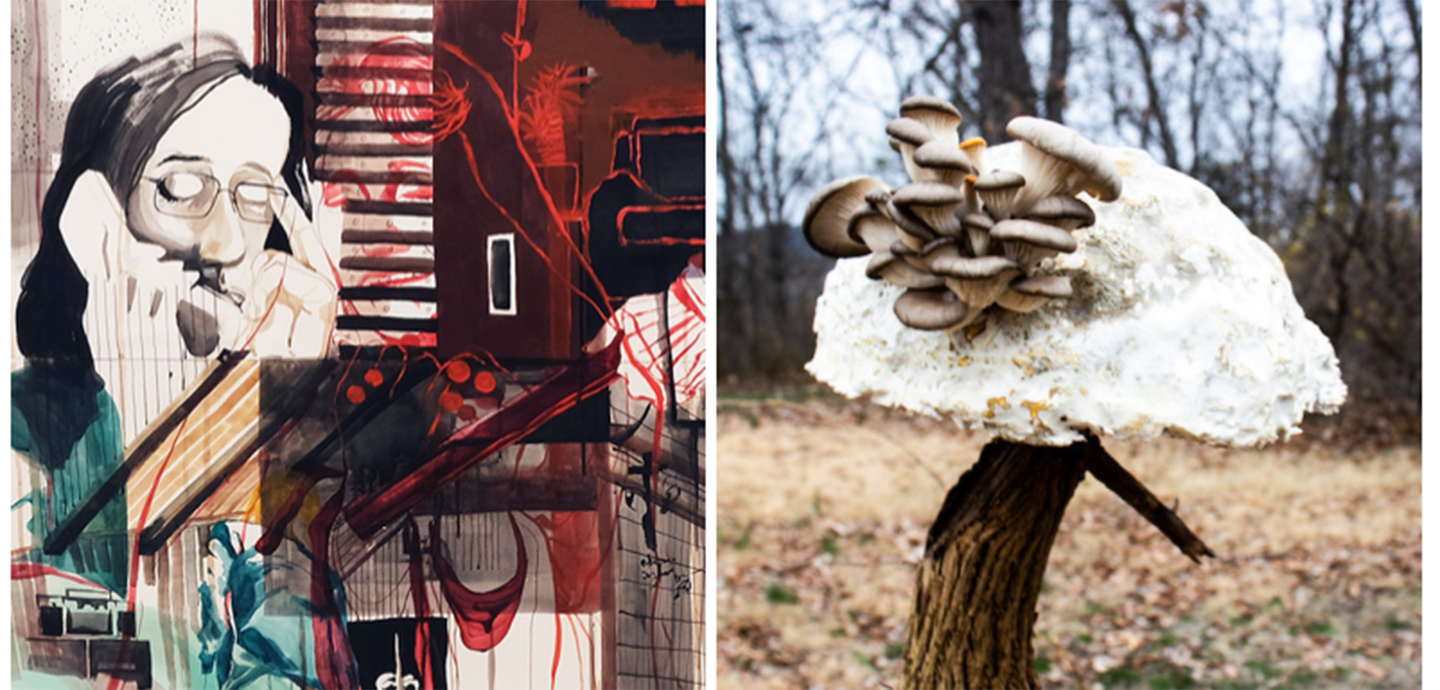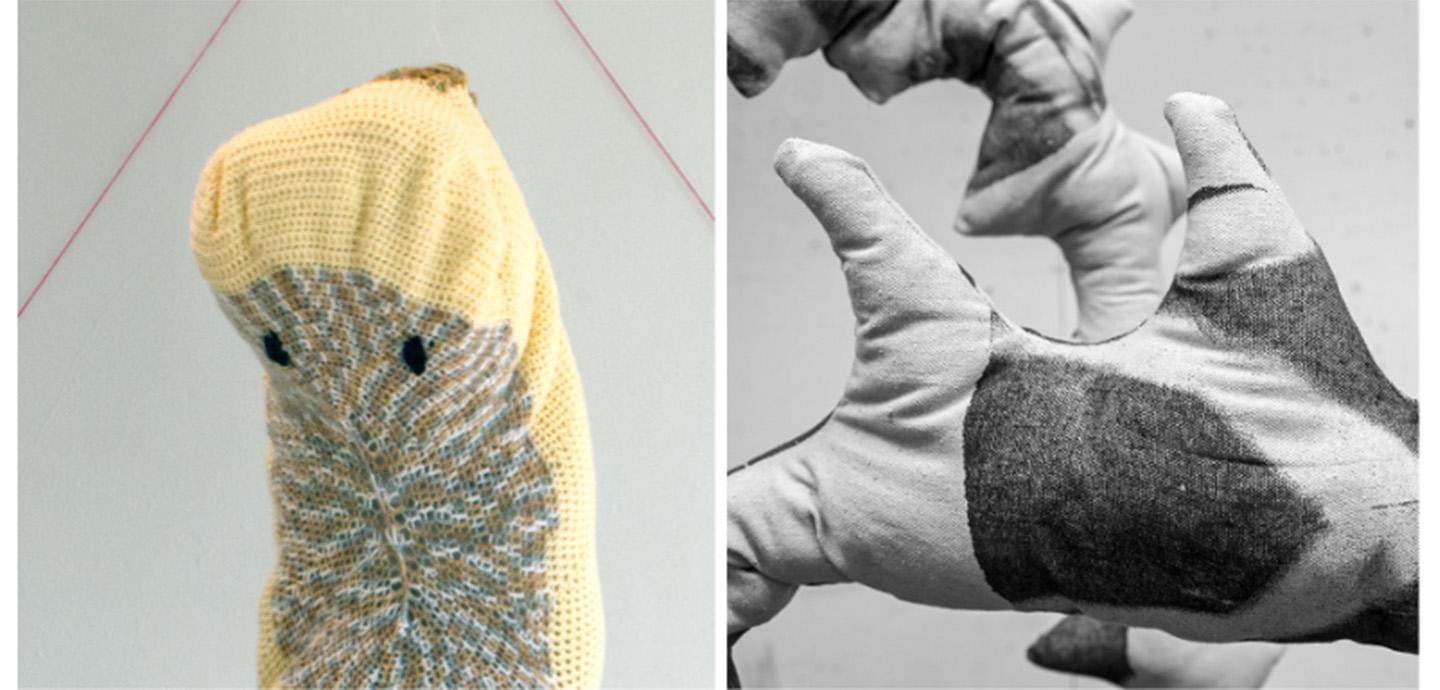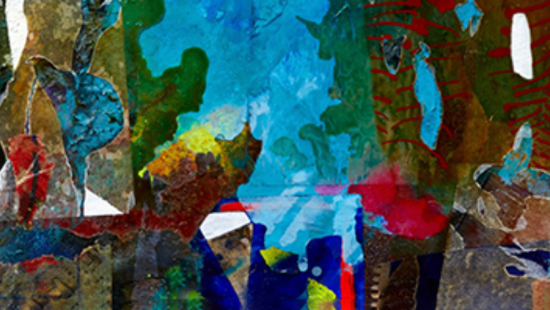M.F.A. Group Exhibition: Clapping Corners
Ortega y Gasset Projects is pleased to present Clapping Corners, a group exhibition in the main gallery by Cornell University M.F.A. artists Giselle Hobbs, Shelby Johnson, Annamariah Knox, and Bec Sommer (all class of 2023).
For the past two years, the four artists in the show have worked together in an intimate graduate program in Ithaca, New York. Their works explore overlapping themes of the body's relation to space and to inner states of being. Clapping Corners addresses the resonant energy that a space can hold and the ways it can impact bodies within, creating a reciprocal exchange. The works range across explorations of the body as an environment, the interface between mind and body, and the permeability and blurring of interiors and exteriors. Together, the show considers the nature of physicality, immateriality, the consolidation of self, and of collective action.
This exhibition is funded in part by the Cornell Council for the Arts.
Artist Biographies
Giselle Hobbs received her M.A. in art history from Syracuse University in 2020 and her M.F.A. in Creative Visual Arts from Cornell University in 2023. She creates large-scale illusionistic paintings that probe the relationship between humans and the natural environment. Her work also includes photography, bio-art, and sculptural installation.
Shelby Johnson (b. Birmingham, Alabama; 1996) received their B.F.A. in art education from Texas Christian University in 2018 and M.F.A. in Creative Visual Arts from Cornell University in 2023. They create installations with soft sculpture and sound to re-imagine their past experiences. Johnson has shown in Fort Worth, Texas; Dallas, Texas; Ithaca, New York; and Brooklyn, New York. They also founded PLANT Gallery in Dallas, Texas, in 2018.
Annamariah Knox (b. New York City, New York; 1993) received a B.A. in art history and theater from Bowdoin College (2015) and is currently a Master in Fine Arts candidate in Sculpture at Cornell University. She is a multidisciplinary artist primarily working with textiles, soft sculpture, and movement. Knox has shown work at the Arrowmont School of Arts and Crafts in Gatlinburg, Tennesse; in Ithaca, New York; in Brunswick, Maine; and in Brooklyn, New York.
Bec Sommer (b. Saint Louis, Missouri; 1997) received his B.F.A. in painting from KCAI in 2020 and his M.F.A. in Creative Visual Arts from Cornell University in 2023. He is a painter and a videomaker who also works in the realms of screenwriting, sculpture, and sound design. Most recently, he has completed a two-part feature-length video project that examines the pitfalls of moralizing desire, particularly how these moralizations get used by reactionaries and bad actors. Bec Sommer has shown at Leedy-Voulkos Art Center and Vulpes Bastille in Kansas City, Cornell University in Ithaca, and Ortega Y Gasset Projects in Brooklyn, New York. He has also participated as a student in the SOMA Summer Program of 2022, entitled Avatars in Paradise.
Artist Abstracts
Giselle Hobbs's Brain Medusozoans are mycelium and wood sculptures from her recent body of work Brain Storm. These works translate her brain into a functioning mycorrhizal network while creating an ecosystem that bridges neural, arboreal, and cosmic structures. Inspired by annual experiences of brain MRIs after which she waited apprehensively for the results of her scans, these living sculptures probe the nature of the mind as an environment that has structural parallels with tree roots and galaxies bridged by strands of matter.
Shelby Johnson's Seraphim Trinitas are three singers stuck in an eternal cycle of praising a God who will never accept them. The crocheted figures distort the human form. This work is a reflection on Johnson's experience of growing up queer in the Southern Baptist Church. They were outed and underwent an attempted exorcism by three women. The trio are simultaneously the women who tried to pray the gay away, the holy trinity, the three fates, and Johnson's inner id, ego, and superego.
Annamariah Knox's Phase Change are gateways reflecting states of being. The screen print and stuffed fabric shapes explore the form of emotions as they relate to bodies within architectural structures. As viewers pass under them, the arches function as devices for passage as transformation, for passage as a state change. The printed images reference body scans and x-rays of limbs, and the soft tendril-like forms invoke certain vibrations inherent to emotional experiences.
Bec Sommer's Sickroom and Sisterhood are two paintings that act as a couple and come from the Starvation Fantasy suite of works. They feature figures through overlapping marks and washes of watercolor, ink, and acrylic paint. Depicting interpersonal and internal conflict within spaces that transform themselves between the interior and the exterior, the privacy of a bedroom is also the exposure of a forest. His video, Michael Friedan, is a play on both the feminist concept of the problem without a name, from Betty Friedan's The Feminine Mystique, and the character of Michael Myers, who is named in the credits of the original Halloween as simply The Shape. This is a psychodrama in which a slasher villain experiences the sort of gendered and racialized emptiness that Friedan describes.
A note on access:
Ortega y Gasset Projects is accessible through two sets of stairs via 3rd Ave: The first set contains seven steps to a landing, and the second five steps leading visitors into the gallery. If you have questions or specific access requests, please contact us at oygprojects@gmail.com. OyG is an artist-run curatorial collective and exhibition space in Gowanus, Brooklyn. Ortega y Gasset Projects is a non-profit 501(c)(3) organization.
Gallery Hours: Friday, Saturday, and Sunday; 1-6 p.m. or by appointment.
To schedule an appointment, please contact the gallery at least one week in advance.
Ortega y Gasset Projects
363 3rd Ave. Brooklyn, NY 11215
www.oygprojects.com
oygprojects@gmail.com








